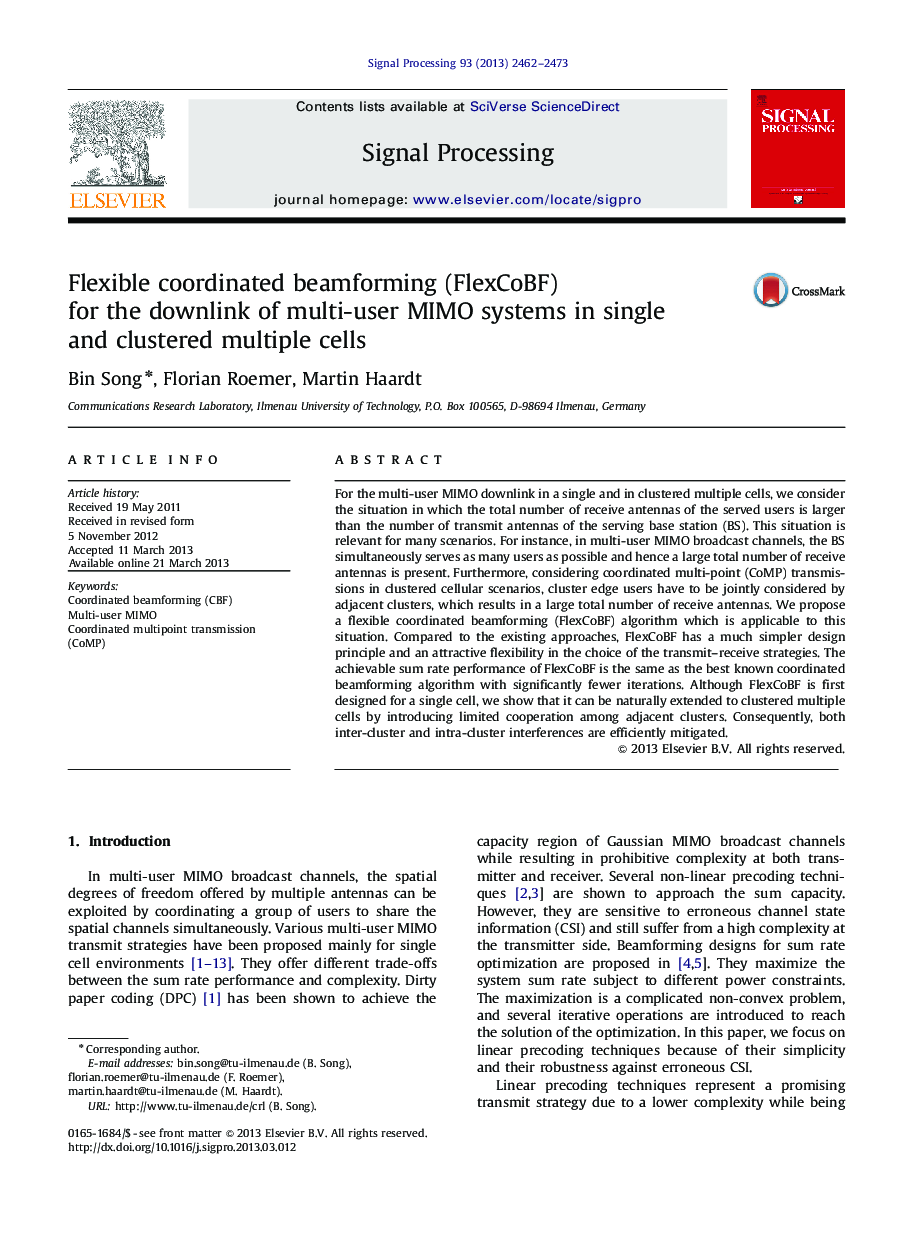| Article ID | Journal | Published Year | Pages | File Type |
|---|---|---|---|---|
| 563132 | Signal Processing | 2013 | 12 Pages |
•FlexCoBF algorithm works for the multi-user MIMO downlink in single and clustered multiple cells.•FlexCoBF has a much simpler design principle and more flexibility.•The inter-cluster and intra-cluster interferences are efficiently mitigated by FlexCoBF.•FlexCoBF approaches the sum capacity of the MIMO broadcast channels with few iterations.•The convergence behavior of the iterations is investigated.
For the multi-user MIMO downlink in a single and in clustered multiple cells, we consider the situation in which the total number of receive antennas of the served users is larger than the number of transmit antennas of the serving base station (BS). This situation is relevant for many scenarios. For instance, in multi-user MIMO broadcast channels, the BS simultaneously serves as many users as possible and hence a large total number of receive antennas is present. Furthermore, considering coordinated multi-point (CoMP) transmissions in clustered cellular scenarios, cluster edge users have to be jointly considered by adjacent clusters, which results in a large total number of receive antennas. We propose a flexible coordinated beamforming (FlexCoBF) algorithm which is applicable to this situation. Compared to the existing approaches, FlexCoBF has a much simpler design principle and an attractive flexibility in the choice of the transmit–receive strategies. The achievable sum rate performance of FlexCoBF is the same as the best known coordinated beamforming algorithm with significantly fewer iterations. Although FlexCoBF is first designed for a single cell, we show that it can be naturally extended to clustered multiple cells by introducing limited cooperation among adjacent clusters. Consequently, both inter-cluster and intra-cluster interferences are efficiently mitigated.
